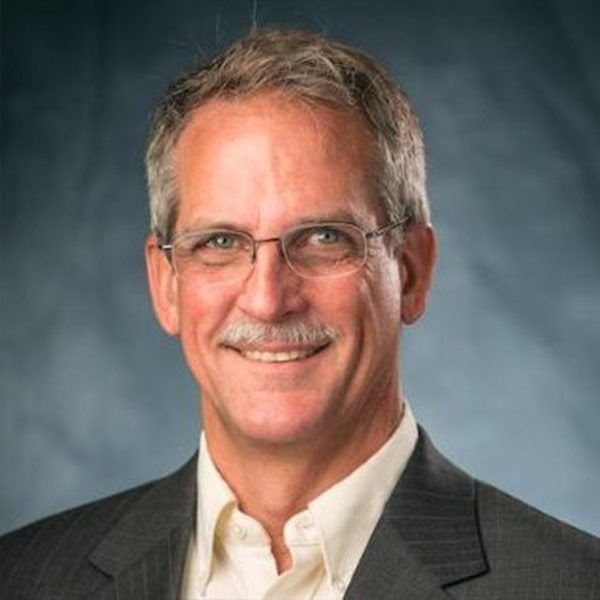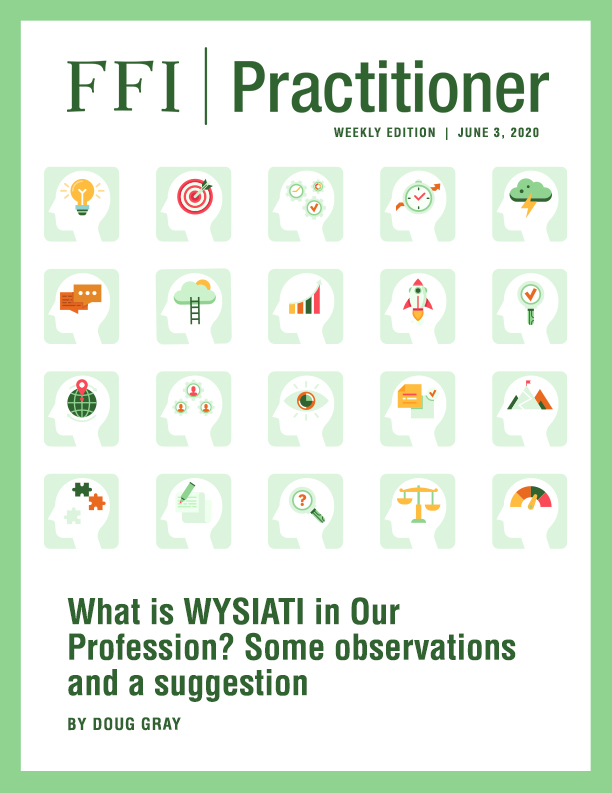

From FFI Practitioner
Podcast Transcript
Jordan Rich (JR): Welcome to the FFI Practitioner podcast. Today’s conversation, “How Positive Psychology Can Help Family Enterprises Flourish,” features Dr. Doug Gray, a consultant with the Family Business Consulting Group and co-founder of Assess Next Gen, LLC. He has worked with thousands of leaders in multiple business sectors, universities, families, and nonprofits. Dr. Gray, let’s start off by having you define positive psychology.
Doug Gray (DG): Academics disagree, you know that, and have disagreed for some time! You also probably know that psychology is a relatively new science, with only one hundred years of research. Positive psychology has only twenty-five years of research. The term is attributed to many people, but it’s thought to be more American than European. Does it imply the pursuit of happiness? The short answer to that is “no.” It doesn’t. It does, however, create an opportunity for us to ask, “What’s important in life?” There was a triggering event [for the origin of the term “positive psychology”] in 1998 in the American Psychological Association. Martin Seligman, who is one of the more prolific voices in the positive psychology research world, was the president [of the American Psychological Association] at the time, and he was tasked with shifting the tide [within the psychology field’s research focus]. Sixty percent of the research prior to [1998] in psychology had been on negative “stuff” that needed to be explained—anxiety, depression, violence. After global world wars and plenty of opportunity to conduct that research, we knew a lot as psychologists [about negative phenomena]. Others looked around and said, “Should we really be focused on that? Shouldn’t we instead, as social scientists, focus on what makes people flourish, and how we flourish? What are the conditions and variables that we might design into our world so that we could be a better person?
JR: I think if you were to ask most rational people whether they’d rather be flourishing than floundering, they’d probably say, “I’d rather be flourishing! I want people to be positive, energized, happy, and fulfilled.” So, family business is a great place to see how this all comes together.
DG: Absolutely. To me, it’s no surprise that around the same time, twenty-five years ago, this field that we’re in today, family business consulting, also emerged. Some of the earliest leaders were part of the Family Firm Institute. They asked, “What is it that helps some businesses flourish, but not others?” Some of those variables included things like durable social harmony. It’s not just, “You, I, and our kids are going to do well,” it’s “We might persist, and we might, maybe, take the best strengths from this entity or organization, so that it’s perpetuated over time.”
I want to be clear: this isn’t a fluffy direction, [deciding] “We’re going to flourish because we want to flourish.” Seligman and others found five clusters of research that they used: [the acronym] PERMA is the model. “P” stands for “positive emotions,” which is the most subjective one [of the five]: to what extent am I pursuing positive emotions in this world? “E” is “engagement”: to what extent am I experiencing “flow,” that state where balance and challenge balanced in some manner. “Flow” doesn’t only happen on a tennis court or a basketball court, it also happens in our work life and our emotional relationships. Which leads to the “R,” a cluster of research about “relationships”: the quality and quantity of those relationships that lead to flourishing lives. “M” is “meaning”: what provides meaning or purpose for you is different from what provides meaning and purpose for me. Which leads to “A,” which is “accomplishment” or “achievement”: how we pursue those activities that help us. If there are five different clusters of research, you could pursue the “engagement” question in family businesses, and someone else could pursue the “relationship” question in family businesses. Next to each other, we’re both supporting that notion of how we create flourishing family businesses.
JR: The title of your assessment plan is The Leadership 360 Assessment Process for Family Business. And here is a question that comes up early on in the prospectus that I’ve been reading: How does the individual fit into this structure? How does the one person who has to meld with everybody else to be successful fit in? You write, “Family enterprises are more complex than any other type of business, therefore the theoretical model describes the complex relationships of these five systems,” and then you go into much more detail. What a laboratory to explore how this is going to work.
DG: Not only that, it’s a complex, messy, systemic laboratory. I think you’re on to the central question: How does the individual fit into the organization? Particularly, how does the individual fit into the family enterprise? Isn’t that the backbone of social psychology? Isn’t that the backbone of industrial organizational psychology? Isn’t that the backbone of parenting?
The reason we started this assessment research, in part, was because we saw a market opportunity. Kent Rhodes is my co-partner and co-founder; he’s at Pepperdine [University] in Malibu. We realized that 360 Assessments are used broadly in publicly-traded companies, and we know that to be the most valid form of assessment. Why? Because if you ask twenty people, “What should Doug do?” twenty people will have twenty different opinions. “Doug ought to start doing this, stop doing that, and continue doing the third thing.” Out of the many opinions, there’s probably a theme that will emerge, and that’s what social psychologists have been asking for years. Many of us in our advising or consulting work ask those kinds of questions. However, many family systems can’t deal with the answers, because they’ve never been taught how to take that data! If, for instance, someone says, “Doug ought to do x,” but twenty years ago that same person said something to my wife that I found negative, we have long memories and consequently, we’ll avoid that person’s feedback sometimes. I think that’s a massive opportunity for all of us to get better at communicating the data we need to share. In 360 assessments, there’s typically quantitative and qualitative data. Qualitative involves those three questions I mentioned [what to start, what to stop, what to continue doing]. If we have twenty raters and I send them each an invitation to provide fifteen minutes of commentary on a leader named Nancy. And Nancy’s maybe going to get a fifty percent response rate, so now I’ve got ten people commenting on Nancy. Then I have my notes and their written notes, I have that material which I then parse, edit, and carefully digest so that Nancy can hear it well. In addition, there are fifty quantitative behaviors in an organized model. And the model starts with what you just said: How does the individual fit into the organization? Most of us focus, I think, too much on the roles of family, business, and ownership, because they are important and we know them well. The fourth role is endemic to all of my clients: they’ve got to [score highly] on what is called a “learning organization.” To what extent are they willing and open to learning about any new behaviors? So, we quantify that. We started with a big sample population and we narrowed it down to fifty items.
JR: The idea of 360 assessment is one that people in the business world have a good conceptual idea of. What you’re doing is adapting this process to personality in a family, something that may not have been done in the past. It’s easier to grasp hold of something you’re familiar with. Are you finding that to be the case?
DG: Yes. Results have been phenomenal. I’d use slightly different words: we’re not looking at personality. We’re looking at behaviors—five types of behaviors. We know empirically based on the sample population and the validation process for this study. We had fifty questions on what it means to be in a family, based on our research and what we thought what was important, and we narrowed those fifty down to ten. Same thing with business, ownership, learning, and self. So we’re not really looking at the personality of Family A or Family B, though that’s an interesting idea, it’s not what this is customized to do. Instead, we look at how an individual can determine what behaviors they need to adopt in order to step into that system.
Sidebar
by Doug Gray
This week’s contributor, Doug Gray, provides an overview of the VIA Classification assessment tools, which can help family enterprise practitioners think differently about their clients’ family system.
DG: That template was inspired by an article in Harvard Business Review.1 There are so many models out there. I think it’s important to state that Kent and I took what we knew to be true in our consulting expertise as well as what we thought might simplify the conversation for others. “Family champions” is a term that a couple of my colleagues, Josh Nacht and Greg Greenleaf, have written quite significantly on. A “champion” in this engagement often is the person who is supportive of the learning process, in whatever way that means. It could be an older person who wants to know if their rising or next gen has the capacity to step into that role. One of the early assessments that I did with a colleague was with a woman who thought she was ready to go, her consultant thought that she was more than ready to go, but her family wasn’t ready to embrace that idea. So this, for them, validated the fact that this leader was certainly more than ready to step into those shoes [i.e., the leadership role]. I think that external validation is critical, often, and it deepened the engagement and that consultant was able to do a lot more work. So, that’s the champion idea: the person who initiates this process. The raters are seven different groups. We know that the ownership group is the most influential—so if Uncle Bob is both a family member and an owner, we’ll ask him to contribute to this process as an owner. A board, if they have a board, managers if they have managers, peers, direct reports, and family and friends. One of the things we learned early on is that family and friends accelerate the careers of each of us. I’ll tell you that when I’ve interviewed people participating in this process, they love to be included, but the families seem to really love being included.
JR: I think there’s something to be said about the fact that it’s an open process—that there’s an invitation to communicate. So many times, people are fearful or don’t feel comfortable starting the conversation. This is a great way to jump into the conversation.
DG: It is. In fact, some of the negative history of 360 assessments is that they were there for developmental purposes: “How do you fix Doug?” “Sign him up for a 360!” That’s not where we’re coming from. We’re coming from the opposite side: How does the family business flourish? This is all part of positive psychology. To me, it’s an example of how we can help individuals flourish.
JR: How much of the success of this has to do with the empowerment that people feel—the fact that they can contribute to a solution?
DG: The word “empowerment” is often used as a counterpoint to power and influence. So, psychologists also like the word “agency.” I think “agency” is more accurate to describe this process. It could be that the younger generation is the champion of this process. Why? Because they have never had an opportunity to prove their capacity. Let me give you an example. I have a client with five mid-level managers: two are family, three are non-family. The owners and I worked with them for a year and a half, one of my FBCG colleagues [worked] with the family, and I [worked] with the business. The owner said, “We’re preparing for a year of transition. We know the president is going to leave, the CFO is going to leave—they’re going to stay involved as advisors, but they’re no longer going to be as involved on a day-to-day basis. So we want to school up these five mid-level managers as quickly as possible. Can you do a 360? I’ve heard that’s a pretty good idea.” We said, “Absolutely!” He said, “How quickly can you do it?” I asked, “How quickly do you want it?” Within six or eight weeks, we completed the whole process. For those five leaders, it was profoundly valuable because [these] specific behaviors [enabled] them to identify what they need to do and with whom. For instance, if you think your score is high on certain behavior, like communicating the family’s values, but your direct reports say otherwise, that’s a direction that I [as an advisor] can work with and that leader can practice immediately. The directionality and the specific focus on behaviors is really the key here to change. And I should mention: that business was trying to grow forty percent year over year, and has for multiple years.
JR: That’s a nice button on the story. I’d like you to address before we run out of time, the role of the advisors in this process and what you specifically have done to assist advisors logistically, making sure that the 360 assessment process works.
DG: The role is critical and it depends on their experience. I see this tool as a way to deepen any engagement with a family system that needs that next step. It’s not a one-and-done or superficial process. It’s not a thing that you might do quickly. Some of my FBCG colleagues have implemented it quite quickly and with very little instruction from me. Others have required lots of Zoom sessions with me, two or three hours over the course of that engagement. I think that’s normal. So if anyone is interested in that process and they have less experience with 360 assessments, this could be a great tool for them. More importantly, I think it could be a tool that a family office could embrace, a wealth advisory or an estate law firm could embrace, a DEI initiative could embrace, somebody who is looking for specific tools to help develop the next gens—these folks are better educated than any in history, they’re older, they’re healthier, they’re living longer, and they’re patient. Some of them are in their twenties, some of them are in their fifties. To me, that means they need to know what to do next. And this is but one tool to help people flourish.
JR: And the knowledge and the gathering of data has been immense over the last thirty years, and now it’s being put into practice, which must make a lot of people in your field feel good, very confident that there is data to back all of this up.
DG: Never enough data samples!
JR: Good luck to you! And for people who want to find out more, what would be the best place to look?
DG: The website assessnextgen.com is a good resource.
JR: Doug, thank you for your time and expertise, and all of the positive information you’ve provided today.
DG: My pleasure. Glad to be a resource for anybody.
Reference
1 Nieto-Rodriguez, A. (2021). The Project Economy Has Arrived. Harvard Business Review, Reprint R2106B. Retrieved from https://hbr.org/2021/11/the-project-economy-has-arrived




